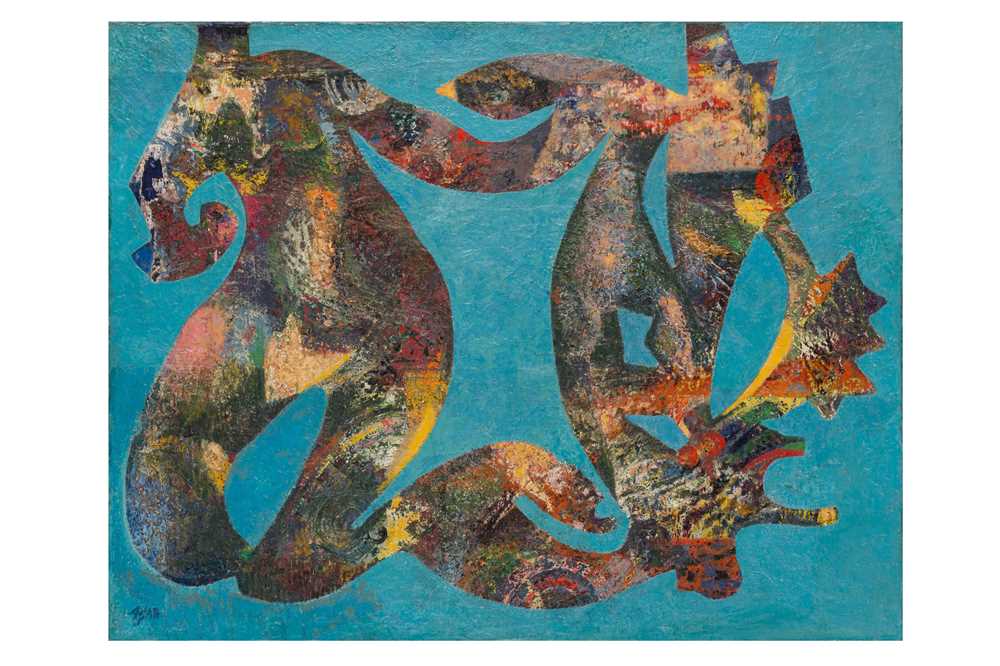

“I have spent my whole life in revolt against convention, trying to bring colour and light and a sense of the mysterious to daily existence. One must have a hunger for new colour, new shapes and new possibilities of discovery.” – Eileen Agar
When poet David Gascoyne and artist Roland Penrose informed Eileen Agar that she would be included in the landmark 1936 International Surrealist Exhibition in London, declaring her a ‘surrealist’, her now-famous reply was simply, “Am I?” This response encapsulates her lifelong resistance to artistic labels and fixed identities. While Agar’s work aligned closely with surrealism, she maintained a creative independence that defined her long career.
Born in 1899, Agar trained under Leon Underwood and Henry Tonks at the Slade School of Fine Art in London. Her early years were marked by artistic experimentation, travels across Europe and relationships with key cultural figures of the 20th century. In 1928, she moved to Paris with the writer Joseph Bard, later her husband, and mingled with modernists including André Breton, Constantin Brâncuși and Paul Éluard.
Back in Britain by the early 1930s, Agar began to exhibit her work and joined the London Group in 1934. A pivotal moment came in 1934 when she and Bard took a house in Swanage for the summer. There she met Paul Nash, with whom she formed both a romantic and artistic connection. Through Nash, Agar embraced the concept of the ‘found object’ and began interpreting shells, stones, seaweed and other organic forms through a surrealist lens. One such discovery, an anchor chain shaped by the sea into a coiled form, led to the collaborative work Seashore Monster at Swanage (c.1936), a photomontage that reflected her growing fascination with the interplay between nature and imagination.
Dr Silvano Levy wrote in 2023, “This is how we are to read Agar’s art – chance encounters with objects that utilitarian reality has discarded into redundancy and irrelevance.”
Agar’s inclusion in the 1936 Surrealist Exhibition in London, the only woman artist invited to exhibit, brought her into the international spotlight. Her painting Quadriga (1935), shown at the exhibition, was subsequently requested by the Museum of Modern Art in New York, confirming her global reputation. Her circle of friends and collaborators included figures such as Ezra Pound, Pablo Picasso, Dylan Thomas and Henry Moore. Moore and Nash, her former classmates at Slade, encouraged her to join the London Group and continue exhibiting her work.
Although the Second World War disrupted her output, Agar’s creative energy returned in the 1950s. A short residency in the Canary Islands offered new inspiration, leading to a resurgence in her painting and exhibitions.

EILEEN AGAR (BRITISH, 1904-1991)
A Sea Change
Estimate £20,000 - £30,000
Provenance
Lord Sailsbury
Sale; Christie's, London, 3 June 1999, lot 138, where purchased by the present owner
Exhibited
London, Commonwealth Institute, Eileen Agar: A Retrospective Exhibition, 1971, cat.no.31, p.44
Chichester, Pallant House Gallery, Eileen Agar, An Eye for Collage, 25 Oct 2008-15 Mar 2009, cat no.47, p.84 (col.ill)
A Sea Change, painted in 1958, is a rare example from this renewed period of artistic activity. The painting is executed in reverse, with coloured forms likely painted first, then overlaid with a cool aquamarine wash that defines the structure and movement. The composition evokes flowing forms and organic motion, drawing influence from both Henry Moore and Henri Matisse. The result is a luminous, abstract image that captures Agar’s fascination with transformation and the subconscious.
As art historian Michael Remy notes, “A Sea Change points to a pure movement, a transformation process at work – an unending interplay of life forms, similar to amoebae wriggling in the water.” The marine palette, with its deep blues and sea greens, is a hallmark of Agar’s work and reflects her lifelong connection to water as a symbol of femininity and change.
The painting was included in the artist’s important retrospective at the Commonwealth Institute in 1971, alongside Rite of Spring (1971), which set a world auction record for the artist when it sold for £81,900 at Christie’s in 2022. Agar’s work is held in major public collections including the Museum of Modern Art (New York), Peggy Guggenheim Collection (Venice), National Galleries of Scotland, Tate Modern (London), Victoria & Albert Museum (London), and Pallant House Gallery (Chichester).
Get in touch with our specialist team at pictures@chiswickauctions.co.uk or submit an Online Valuation